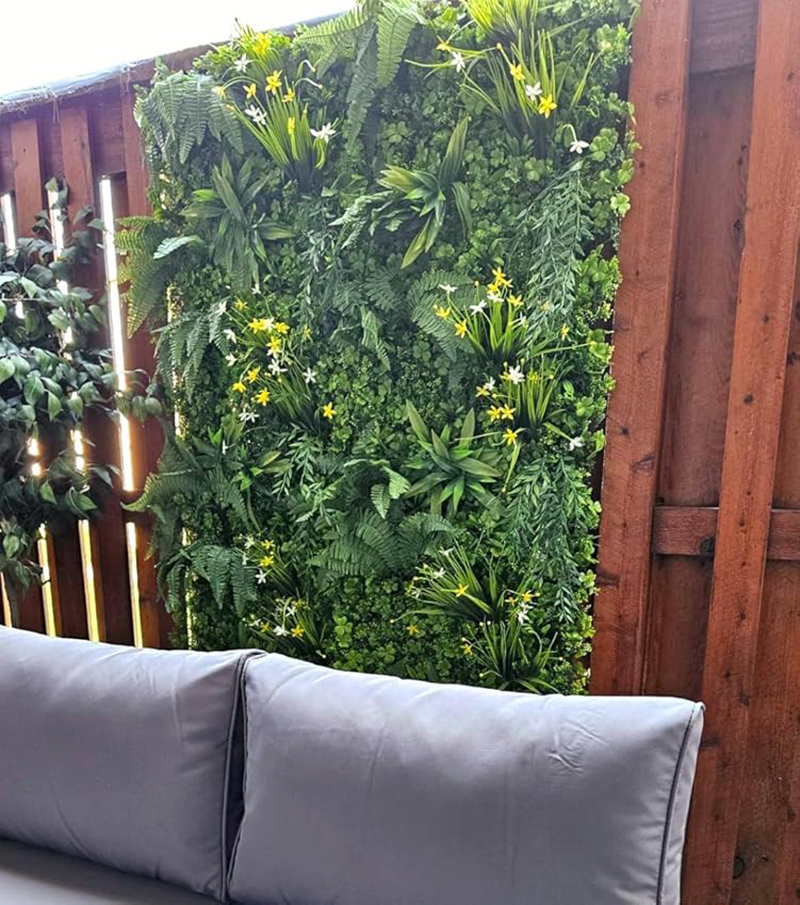The adoption of 3D artificial vertical gardens in urban environments is growing, driven by their aesthetic and ecological benefits. However, accurately estimating their costs is crucial for project planning and budgeting. This article explores the key factors influencing the cost of vertical gardens and outlines systematic methods for cost estimation.
The cost of a vertical garden can be broken down into several components, each varying based on project scale and complexity. The primary expenses include materials, labor, and design fees. Materials encompass the planting modules, substrate, irrigation systems, and structural supports. For instance, modular systems with integrated irrigation tend to be more expensive than bag-based or毯式 systems due to their advanced functionality.
Labor costs depend on the installation’s technical requirements. Projects requiring steel frameworks or complex irrigation setups may demand skilled labor, increasing expenses. Design fees also vary, with customized solutions often costing more than standardized designs. Additionally, project-specific factors like site accessibility and local regulations can influence costs.
The choice of materials significantly impacts the overall cost. Planting modules, for example, range from basic fabric pockets to high-end modular panels with built-in water reservoirs. The substrate, which supports plant growth, can vary in price based on its composition and drainage properties. Lightweight, porous substrates are generally more expensive but offer better aeration and water retention.
Irrigation systems are another critical cost factor. Drip irrigation, while efficient, may require more upfront investment than manual watering methods. Structural supports, such as steel frames or lightweight aluminum, also contribute to costs, with durability and load-bearing capacity affecting pricing. Selecting materials that balance cost, functionality, and longevity is essential for cost-effective projects.
Labor costs are influenced by the project’s complexity and duration. Simple installations, such as wall-mounted plant pockets, may require minimal labor, while large-scale facade greening projects involving steel frameworks and automated irrigation systems demand skilled technicians. The installation process typically includes site preparation, module mounting, planting, and system testing.
Training and expertise are additional considerations. Installers familiar with vertical garden technology may charge higher rates but ensure better outcomes. Project timelines also affect labor costs, with tight deadlines potentially increasing expenses due to overtime or additional workforce.
Beyond initial construction, vertical gardens incur ongoing maintenance and operational costs. These include plant replacement, irrigation system upkeep, and pest control. Regular pruning and fertilization are necessary to sustain plant health, with labor and material costs varying by plant species and garden size.
Irrigation systems require periodic checks to prevent leaks or blockages, while structural components may need inspection for corrosion or damage. Energy costs for automated systems, such as pumps or lighting, also contribute to long-term expenses. Estimating these costs upfront helps in planning a sustainable budget.
To manage costs effectively, project managers can adopt several strategies. Standardizing design elements reduces customization expenses, while phased implementation allows for budget flexibility. Partnering with local suppliers for materials and labor can lower costs due to reduced transportation and logistics expenses.
Additionally, leveraging technology, such as smart irrigation controllers, optimizes water use and reduces long-term operational costs. Regular maintenance planning and training for in-house staff can also minimize reliance on external contractors, further controlling expenses.
Estimating the cost of 3D artificial vertical gardens requires a comprehensive understanding of material, labor, and long-term maintenance expenses. By systematically analyzing these factors and adopting cost-optimization strategies, project stakeholders can ensure efficient budgeting and successful implementation. As vertical gardens become more prevalent in urban planning, accurate cost estimation will remain a critical component of their adoption.

Contact: Amy
Phone: 86-15311787313
E-mail: info@foszmac.com
Whatsapp:86-15311787313
Add: Fengtai District, Dacheng Road, No.24 Building, Room 203, Beijing, China